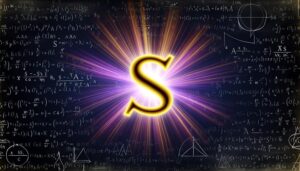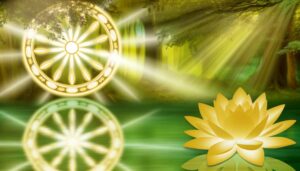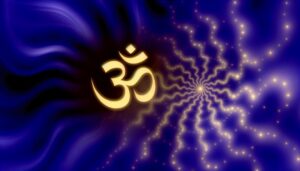What Is the Meaning of the Deathly Hallows Symbol?
The Deathly Hallows symbol from J.K. Rowling's 'Harry Potter' series signifies three potent magical artifacts: the Elder Wand, Resurrection Stone, and Invisibility Cloak.
Each represents different facets of humanity's struggle with mortality: the Wand symbolizes ultimate power and its dangers, the Stone signifies the desire to resurrect the dead, and the Cloak embodies protection and concealment from death. Together, these represent mastery over death and a deeper philosophical inquiry into human desires and the natural order.
For a thorough exploration of these themes and their cultural impact, further information is available.
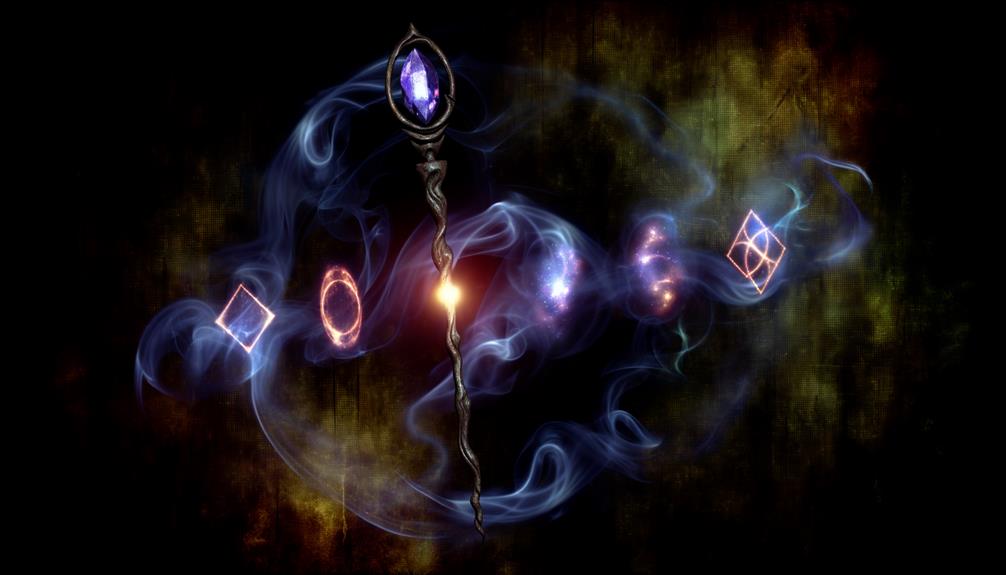
Key Takeaways
- The Deathly Hallows symbol embodies mastery over death through the Elder Wand, Resurrection Stone, and Invisibility Cloak.
- It represents the human quest for power, immortality, and protection.
- Each artifact within the symbol signifies different aspects of human desire and mortality.
- The symbol reflects themes of mortality, power, and the philosophical pursuit of wisdom.
- It is a central motif in the Harry Potter universe, symbolizing unity and resistance.
Origins of the Deathly Hallows
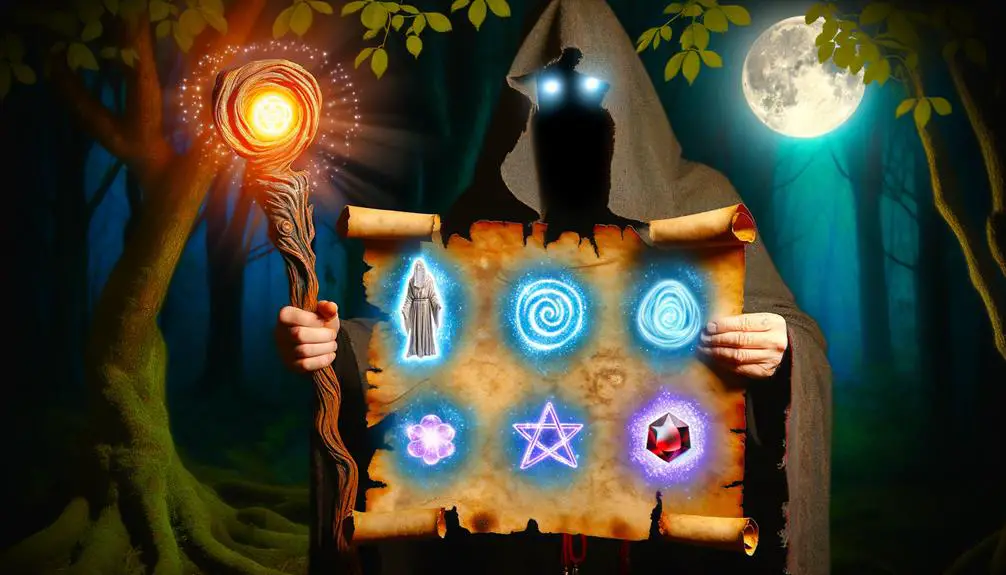
The origins of the Deathly Hallows are deeply rooted in the rich tapestry of folklore within the Harry Potter universe, specifically recounted in the tale 'The Tale of the Three Brothers' from 'The Tales of Beedle the Bard.'
This narrative is pivotal, depicting three brothers who cleverly evade Death and are subsequently offered three powerful artifacts: the Elder Wand, the Resurrection Stone, and the Invisibility Cloak. These items are imbued with profound significance, symbolizing mastery over death.
Authored by J.K. Rowling, this ancient legend serves as a critical foundation for understanding the Deathly Hallows' role within the broader narrative. It underscores the thematic exploration of mortality, power, and the human desire to transcend natural limits.
Symbolic Components

The Deathly Hallows symbol comprises three distinct magical artifacts: the Elder Wand, the Resurrection Stone, and the Invisibility Cloak, each of which holds profound historical significance.
These components are not merely objects of immense power but also serve as metaphors for different aspects of human desire and mortality.
Analyzing each artifact's symbolic meaning provides a deeper understanding of their role within the lore and their broader implications in the narrative.
Three Magical Artifacts
Consisting of the Elder Wand, the Resurrection Stone, and the Invisibility Cloak, the Deathly Hallows symbolize three powerful magical artifacts that play pivotal roles in the wizarding world.
The Elder Wand, renowned for its unparalleled power and allegiance dynamics, epitomizes the ultimate wizarding might.
The Resurrection Stone, capable of summoning shades of the deceased, explores the profound human desire to reconnect with lost loved ones.
The Invisibility Cloak, offering true invisibility, represents the nuanced balance between concealment and revelation.
Each artifact, while potent independently, collectively embodies the intricate interplay of power, mortality, and concealment within magical lore.
The Hallows, therefore, are not merely objects but profound symbols that encapsulate fundamental aspects of the human experience in a magical context.
Historical Significance
Examining the historical significance of the Deathly Hallows reveals how their symbolic components have transcended their narrative roles to influence the broader cultural and philosophical understanding of power, death, and invisibility within the wizarding world.
The Elder Wand epitomizes ultimate power and its peril, echoing ancient myths about the corrupting nature of absolute authority.
The Resurrection Stone symbolizes humanity's perennial struggle with mortality, embodying the desire to confront death's finality.
Finally, the Invisibility Cloak represents the allure of evading fate and the ethical considerations of unseen actions.
Together, these artifacts reflect deep-seated themes that resonate through history, literature, and moral philosophy, offering a rich tapestry of symbolic meaning that extends beyond mere magical objects.
The Elder Wand
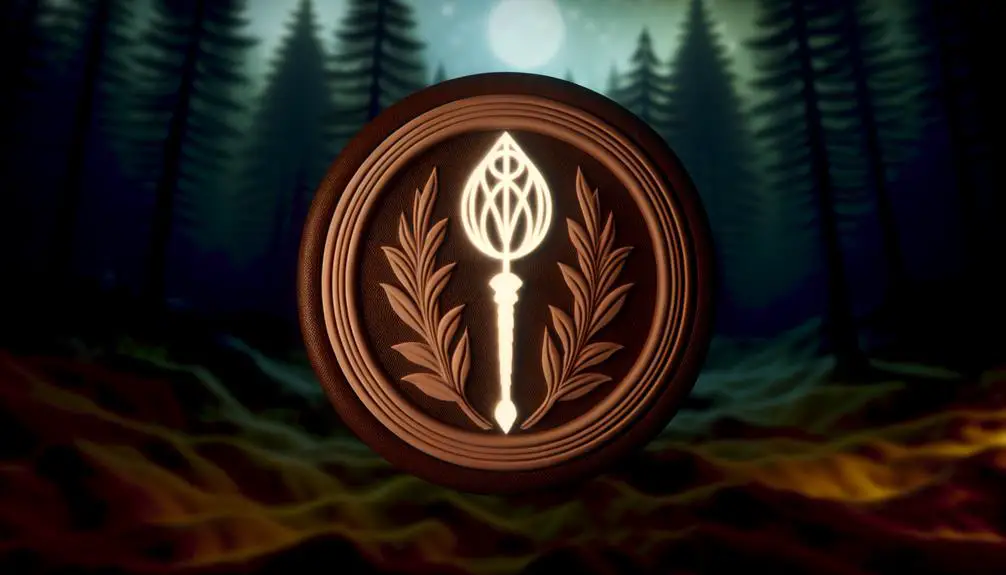
Widely regarded as the most powerful wand in existence, the Elder Wand is a central element in the lore of the Deathly Hallows. Crafted from elder wood and possessing a core of Thestral tail hair, the wand's construction inherently contributes to its formidable capabilities.
According to legend, the Elder Wand confers unbeatable power upon its master, surpassing the magical potential of any other wand. However, its unparalleled potency is also its greatest peril, attracting covetousness and violence.
Historically, ownership of the Elder Wand is transferred through defeat, often culminating in the death of the previous possessor. This cycle of conquest underscores the wand's symbolic representation of the ephemeral and perilous nature of ultimate power.
The Resurrection Stone
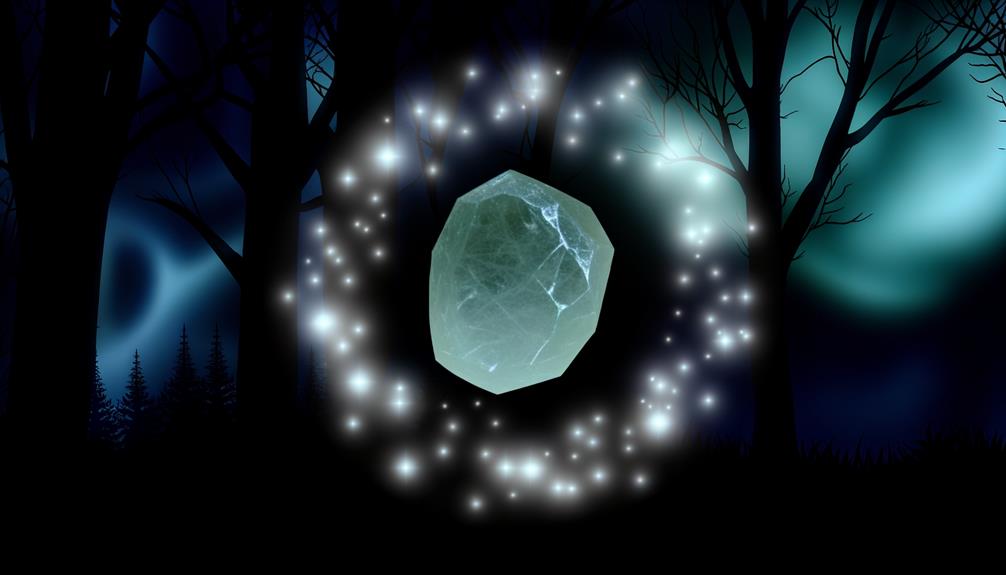
The Resurrection Stone, one of the three Deathly Hallows, is renowned for its extraordinary magical properties that purportedly allow its possessor to communicate with the deceased.
Historically, its significance is interwoven with myths and legends, most notably the tale of the Peverell brothers.
Symbolically, the stone represents the human desire to overcome mortality and the profound complexities surrounding life and death.
Stone's Magical Properties
Intriguingly, the Resurrection Stone's magical properties lie in its unique ability to summon the spirits of the deceased, allowing for brief interactions between the living and the dead. This extraordinary capability is not akin to resurrection in its literal sense but rather facilitates a temporary communion with those who have passed away.
The summoned spirits are often depicted as echoes or shadows of their former selves, providing solace or closure to the summoner. However, the Stone's power is not without its limitations and risks; the emotional toll and potential for obsession can lead to detrimental consequences for the user.
Therefore, while the Resurrection Stone offers a profound magical experience, it requires a judicious and cautious approach to wield effectively.
Historical Significance
As an artifact deeply embedded in wizarding folklore, the Resurrection Stone's historical significance is rooted in its association with the legend of the Deathly Hallows. This stone, purportedly one of three powerful objects bestowed by Death himself, is believed to have the ability to summon the spirits of the deceased. The Resurrection Stone played a pivotal role in numerous historical events and family legacies within the wizarding world, particularly influencing the Peverell lineage. Its allure lies not only in its mythical properties but also in its profound impact on wizarding history and culture.
| Aspect | Details |
|---|---|
| Origin | Legend of the Deathly Hallows |
| First Known Owner | Cadmus Peverell |
| Historical Impact | Influenced family legacies |
| Cultural Significance | Symbol of ultimate power and loss |
| Myth vs. Reality | Blends folklore with historical events |
Symbolic Interpretations
Within the rich tapestry of wizarding lore, the Resurrection Stone serves as a multifaceted symbol that encapsulates themes of grief, longing, and the perilous allure of defying death.
Analytically, the stone represents humanity's intrinsic struggle with mortality and the sorrow engendered by loss. Its ability to summon shades of the deceased provides a tempting but ultimately hollow solace, reflecting the dangers of clinging to the past.
The Resurrection Stone underscores a profound philosophical inquiry: can one truly conquer death without diminishing life's inherent value? It illustrates the psychological complexities of mourning, suggesting that true acceptance and moving forward are crucial for healing.
This stone is a poignant reminder of the limitations and consequences of tampering with the natural order.
The Invisibility Cloak
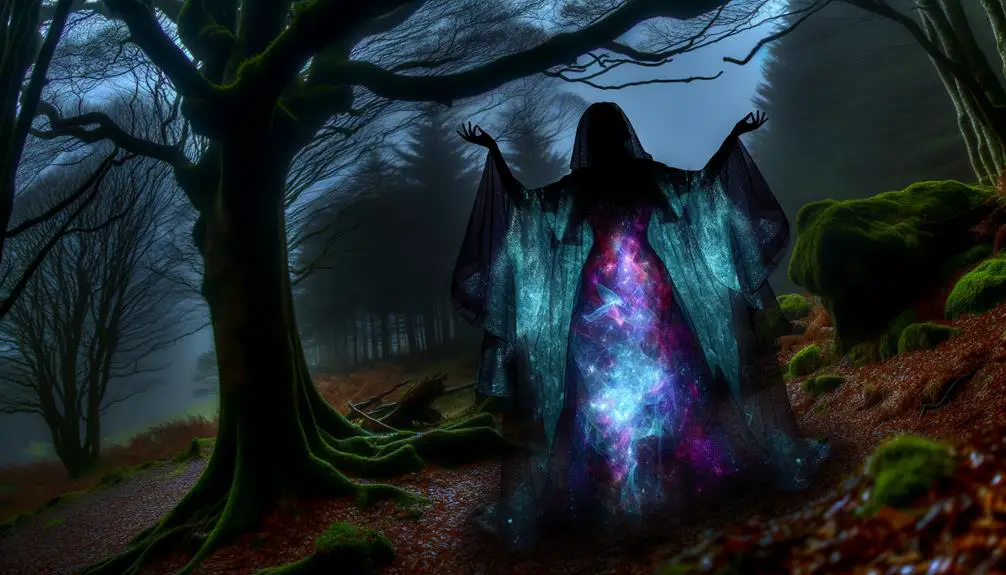
The Invisibility Cloak, one of the three legendary Deathly Hallows, represents the profound concept of concealment and protection from mortal peril. This artifact serves not only as an effective means of hiding the wearer from sight but also symbolizes the philosophical notion of eluding death. Unlike other invisibility cloaks which degrade over time, this particular cloak is impervious to time's decay, underscoring its exceptional nature. Its ability to shield against magical detection elevates its significance in the wizarding world. The following table delineates its key attributes:
| Attribute | Description |
|---|---|
| Origin | Death himself |
| Durability | Impervious to time and wear |
| Protection | Conceals from both physical and magical sight |
| Symbolism | Eluding death |
| Unique Feature | Only true Invisibility Cloak |
This cloak's unparalleled capabilities make it an object of immense scholarly interest.
Themes and Interpretations
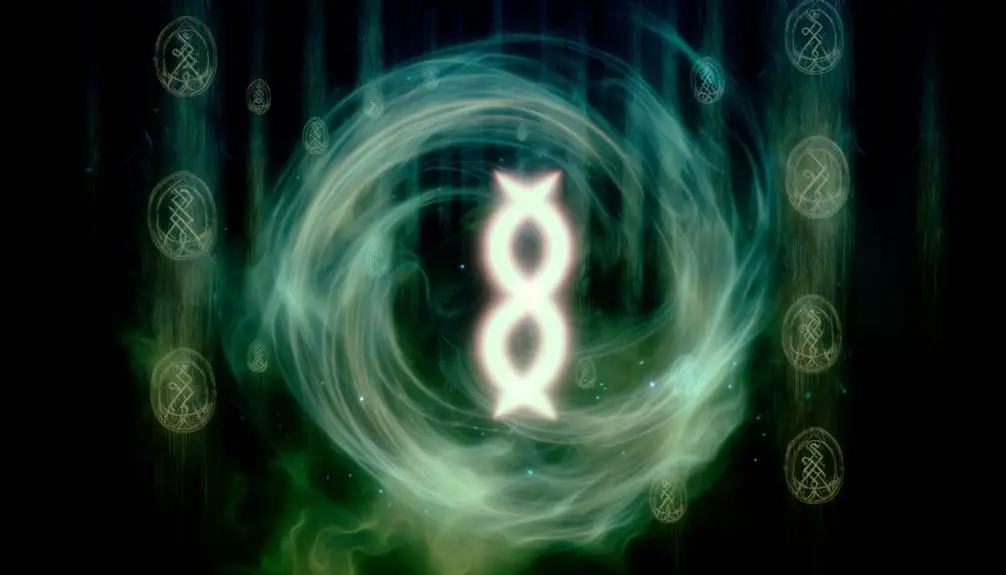
How does the symbolism of the Deathly Hallows encapsulate broader existential themes and philosophical inquiries within the narrative?
The Deathly Hallows—comprising the Elder Wand, Resurrection Stone, and Invisibility Cloak—serve as metaphors for the human quest for power, the desire to overcome death, and the pursuit of wisdom. These artifacts symbolize profound existential reflections on mortality, ethical choices, and the human condition.
The Resurrection Stone represents the futile yearning to conquer death, while the Elder Wand signifies the perilous allure of absolute power. In contrast, the Invisibility Cloak embodies humility and the acceptance of mortality.
Collectively, the Hallows prompt introspection on the moral consequences of one's choices and the intrinsic limitations of human existence, thereby enriching the narrative's philosophical depth.
Cultural Impact and Legacy

Examining the cultural impact and legacy of the Deathly Hallows reveals their profound influence on contemporary literature, popular culture, and collective consciousness. The symbol, originating from J.K. Rowling's Harry Potter series, epitomizes themes of power, mortality, and destiny, resonating deeply with audiences worldwide. Its presence extends beyond the literary sphere, permeating various facets of modern culture.
| Aspect | Influence |
|---|---|
| Literature | Inspired numerous fantasy and young adult novels |
| Visual Media | Frequently referenced in films, TV series, and artwork |
| Merchandise | Widely adopted in fashion, jewelry, and collectibles |
| Social Movements | Symbol of unity and resistance in fan communities |
| Scholarly Discourse | Subject of extensive academic studies and philosophical debates |
This enduring legacy underscores the Deathly Hallows' role in shaping narrative and cultural landscapes.
Conclusion
The Deathly Hallows symbol, an emblematic trifecta of the Elder Wand, Resurrection Stone, and Invisibility Cloak, serves as a profound narrative device, encapsulating themes of power, mortality, and the human condition.
Its cultural resonance extends beyond the literary domain, embodying the eternal quest for mastery over life and death.
Through this symbol, a deeper understanding emerges, revealing the delicate balance between the allure of omnipotence and the inevitable acceptance of human limitations.

